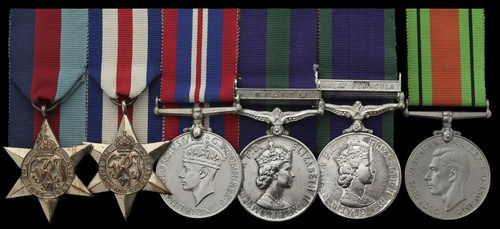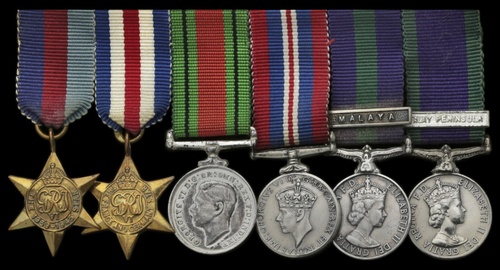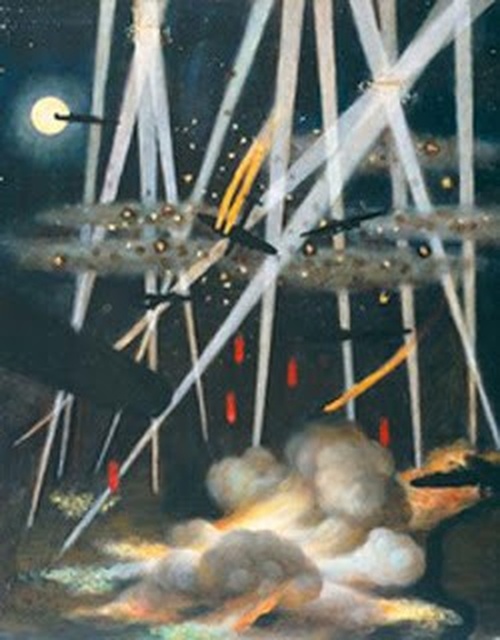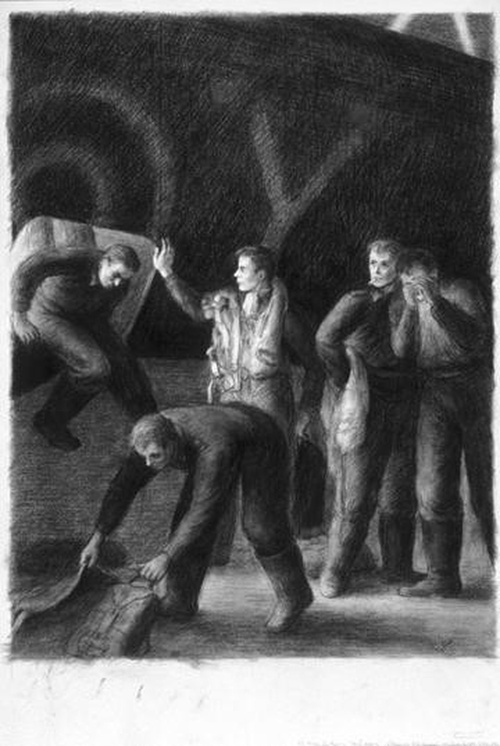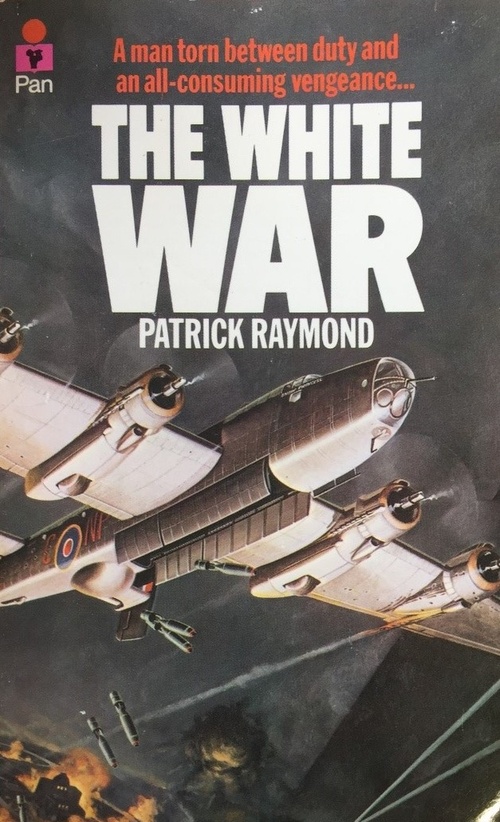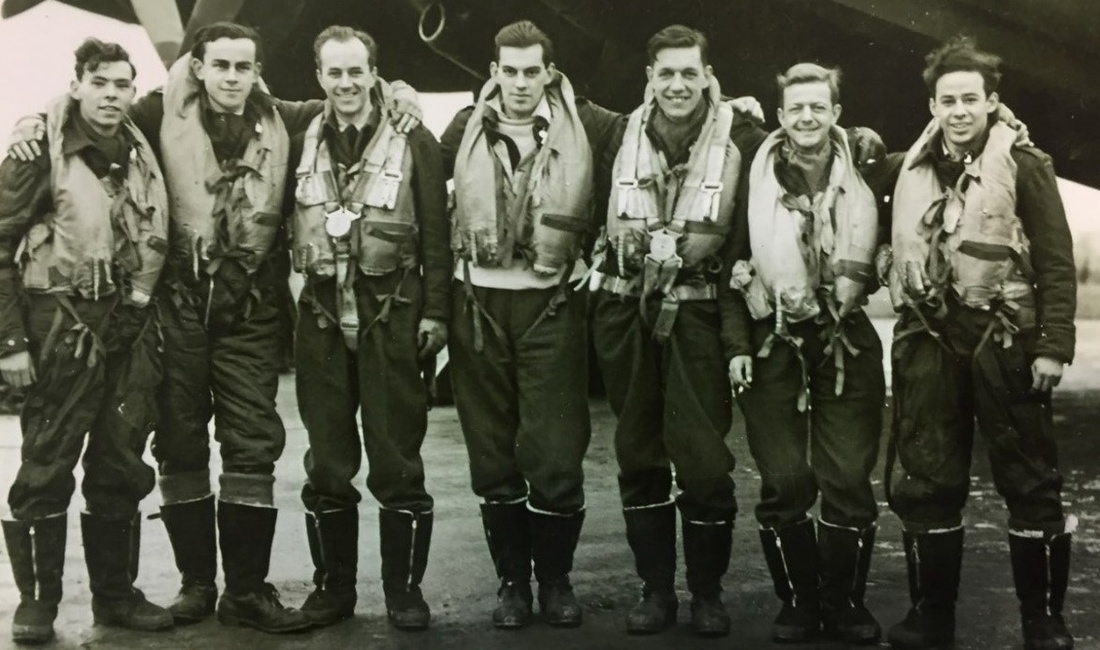Auction: 22003 - Orders, Decorations and Medals
Lot: 327
A notable Second World War and post-war campaign group of five awarded to Group Captain P. E. Raymond, Royal Air Force, a prolific author who described his wartime experiences in a Canadian crew of No. 78 Squadron in Back to Humanity
Yet - remarkably - the exploits of his Halifax crew were to receive further commemoration in the form of the artwork of his bomb aimer, Miller Brittain, the famous Canadian artist
1939-45 Star; France and Germany Star; War Medal 1939-45; General Service 1918-62, 1 clasp, Malaya, E.II.R. (Fg. Off. P. E. Raymond, R.A.F.); General Service 1962-2007, 1 clasp, Malay Peninsula (Wg. Cdr. P. E. Raymond, R.A.F.), mounted court-style as worn, edge nick to last, traces of lacquer, good very fine and better (5)
Patrick Ernest Raymond was born in Haywards Heath, Sussex on 25 September 1924, the son of the novelist Ernest Raymond O.B.E., who was best known for his first novel, Tell England (1922), set in the Great War.
Patrick trained as a Wireless Operator and crewed up with the almost exclusively Canadian crew of Flight Sergeant Jack Fraser in No. 78 Squadron in August 1944. The crew also included the famous Canadian artist Miller Gore Brittain (1912-68), who was the bomb aimer - he was later appointed an official war artist and completed a number of works which feature his experiences with the crew including "Night Target, Germany".
Like his father, Raymond became a prolific author: his first book was written in association with his father and titled Back to Humanity (Cassell, 1945). It describes in intricate detail his experiences during the War as a member of an operational aircrew, and in particular the conflicting emotions he experienced on his first bombing raid, to Dusseldorf on 2 November 1944:
'At half-past four we were in the Briefing Room. "Well, chaps, the target for tonight is Dusseldorf. Some of you have been there before. The town has been very badly hit in previous raids, so I gather that the idea tonight is to complete the job. Your aiming point is here; it is a big target so there is every chance that your bombs will go home. Pathfinders will mark the aiming points with indicators. This squadron will be in the third wave."
Well, here was reality … The engines were starting all round the perimeter track. The airfield began to throb with the sound of aero-engines, some near, some distant. And then, one by one, the big aircraft lumbered out onto the perimeter track to roll down to the runway. And then, one by one, the big aircraft lumbered out on to the perimeter track to roll down the runway. S for Sugar. P for Peter. G for George, each taxi-ing slowly, for each had a heavy load. It was getting dusk now, and the green light from the Airfield Controller came piercing through the half light.
And then began the long hours of flying to the target. It grew dark almost at once. The sound of the engines went on and on - a deep sound, it was steady and strong. And here again was doubt, a persistent companion. He had a lot to say as the dark cavernous clouds meandered by. And the futility of it all was easy to understand now. We were not really enjoying it; it was going against the grain. And the people of Dusseldorf? They were not going to enjoy it either …
"Say, chaps, isn't that the target?" Yes that was the target. The pathfinders had really lit the place up. The brightly coloured flares were falling towards the ground. And, oh Lord! here came the searchlights, long slender stilettos reaching through the gaps in the clouds … And then there was flak - sudden rose-coloured flashes that danced around the bomb stream …
The bomb aimer [Miller Brittain] took over from here. It was his job to guide us into the target.
"Left twenty degrees" he said (Heavens! This was taking an eternity).
"Left, Left, Steady." (God, look at those lights!)
"Steady." (For heaven's sake drop them, man, and let's get out of here).
"Steady. Bombs away!" (Look out, here comes the flak again).
We lost something over the target, something that was drowned by the stronger emotions of contact. It was hard to think of anything now, hard to think about what might have happened. Something seemed to have snapped. Some drug seemed to have taken effect. It was with impunity that we watched the bombs fall.
An incredible sight, really. We could see the brightly coloured indicators, the orange flashes as the bombs exploded, and down there was the wide hook of the Rhine. Small cumulus clouds blew over the town, each one catching the colour in its folds. And then, down to our starboard, a Halifax suddenly silhouetted against a fire; then lost. And the searchlights were still weaving … ' (Back to Humanity, by Ernest and Patrick Raymond, refers).
Many more sorties followed, including Bochum, Gelsenkirchen, Munster, Sterkrade and Duisburg in the very same month. The crew's final outing was against Essen on 23 February 1945.
Tour-expired, Raymond's pilot, Jack Fraser, and Miller Brittain, bomb aimer and artist, were awarded D.F.C.s.
Post-war
Raymond was commissioned Pilot Officer in the Royal Air Force (General Duties Branch) in 1945 and spent the next 22 years in the Royal Air Force, rising to the rank of Group Captain.
He witnessed active service as a Flying Officer in Malaya and as a Wing Commander in the Malay Peninsula operations, prior to taking up his final posting as Station Commander of R.A.F. Uxbridge.
Meanwhile he continued writing, and further titles included A City of Scarlet and Gold, 1963; The Lordly Ones, 1965; The Sea Garden, 1970; The Last Soldier, 1974; A Matter of Assassination, 1977; The White War, 1978; The Grand Admiral, 1980; Daniel and Esther, 1989; The Maple Moon, 1990; and Chika the Serb, 1994.
The Group Captain died at Cuckfield, Sussex, in May 2015.
Sold with copies of two of his books, Back to Humanity and The White War, together with the recipient's wife's Defence Medal 1939-45, in its named card box of issue addressed to 'Mrs. Z. I. M. Raymond, 140a South Road, Haywards Heath, Sussex'.
Subject to 20% VAT on Buyer’s Premium. For more information please view Terms and Conditions for Buyers.
Sold for
£700
Starting price
£350

